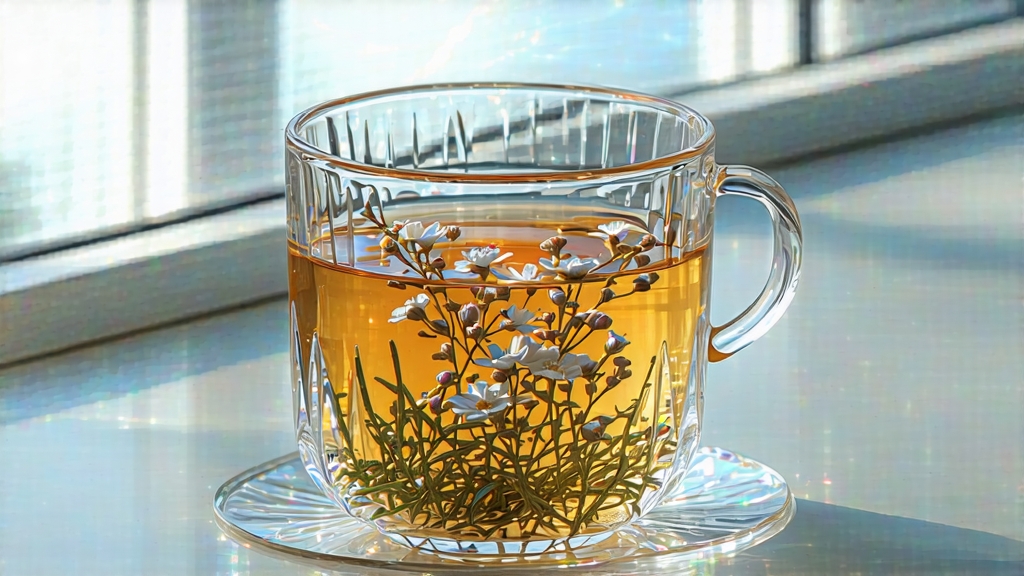
White Hair Silver Needle—Bai Hao Yin Zhen in Mandarin—is the most aristocratic expression of Chinese white tea. To the uninitiated it looks almost too delicate to be tea: slim, silvery buds that resemble miniature ivory chopsticks, each wrapped in a down so fine it floats on a sigh of steam. Yet within those buds lies a history that reaches back to the Song dynasty, a craft that balances silence and vigilance, and a flavor that can make even the loudest room fall quiet.
-
A leaf born of crisis
The written record is fragmentary, but local chronicles from Fuding county (northeastern Fujian) agree that the style now called Silver Needle first appeared during the early years of the Jiaqing reign (1796-1820). Farmers who had over-plucked their bushes for green-tea tribute were forced to leave the last spring buds untouched. When the imperial inspectors finally left, the buds had wilted but not oxidized; unwilling to waste them, the farmers dried them gently over pine-less charcoal. The pale liquor astonished everyone—sweet, almost weightless, with a scent of fresh alfalfa and distant melon. By the 1850s the buds were being presented to the Guangxu Emperor, who declared them “moonlight locked in bamboo,” and the name Yin Zhen—Silver Needle—was fixed. -
Geography that tastes like fog
Authentic Silver Needle comes only from two micro-zones: the coastal hills around Taimu Mountain in Fuding and the higher granite ridges of Zhenghe county sixty kilometres inland. Both share a maritime monsoon climate—mild, humid, perpetually misted—but Taimu’s red phyllite soil gives brighter, jasmine-like aromatics, while Zhenghe’s deeper yellow loam yields a rounder, honeyed body. The tea bushes themselves are seed-selected descendants of the Fuding Da Bai Hao cultivar, whose buds can reach 3.5 cm in early March, plump with amino acids and covered in a protective fur that will later become the tea’s trademark “silver.” -
The craft of doing almost nothing
Making Silver Needle is less a recipe than a meditation. Picking begins when the morning dew is still cool—only the unopened, needle-shaped buds are taken, never the first or the last hour of daylight. The harvesters wear cotton gloves to prevent fingerprint bruises; each shallow bamboo basket is lined with gauze so the buds never meet metal. Back at the farmhouse the buds are spread one layer deep on water-reed trays and left indoors for thirty-six to forty-eight hours. No heat, no rolling, no shaking—only the slow alchemy of moisture evaporating while enzymes nibble at the edges of the leaf cells. When the bud tails snap cleanly, the trays are moved to a low-temperature charcoal oven (never above 40 °C) for a final ninety minutes. The goal is 8–9 % residual moisture—dry enough to store, moist enough to keep the down intact. One kilogram of finished tea demands between thirty-eight and forty-two thousand buds, all picked within a seven-day window in late March. -
How to wake the moon
Silver Needle is forgiving but not careless; its subtlety rewards precision. Begin with glass or porcelain—something that will not steal heat. Use 4 g of leaf for 120 ml of water, ratio 1:30. The water itself should be low in minerals (TDS 30–80 ppm) and cooled to 80 °C; anything hotter scalds the down and flattens the aroma. First infusion: 45 seconds, leaving the buds to drift like submarine periscopes. Second: 30 seconds, watching the buds swell and stand upright, a phenomenon locals call “the forest rising.” Third: 50 seconds, when the liquor turns from pale chardonnay to light topaz and the first notes of ripe pear appear. A good needle yields five infusions; a great one yields seven, each adding a new lexical layer to what began as whispered sweetness. -
Tasting with four brains
Sight: Hold the glass against a white sheet. The liquor should be crystal-clear with a greenish-silver rim; any cloudiness indicates over-oxidation.
Smell: Cup the rim between both hands and inhale twice—once with mouth open, once closed. The open inhale captures volatile